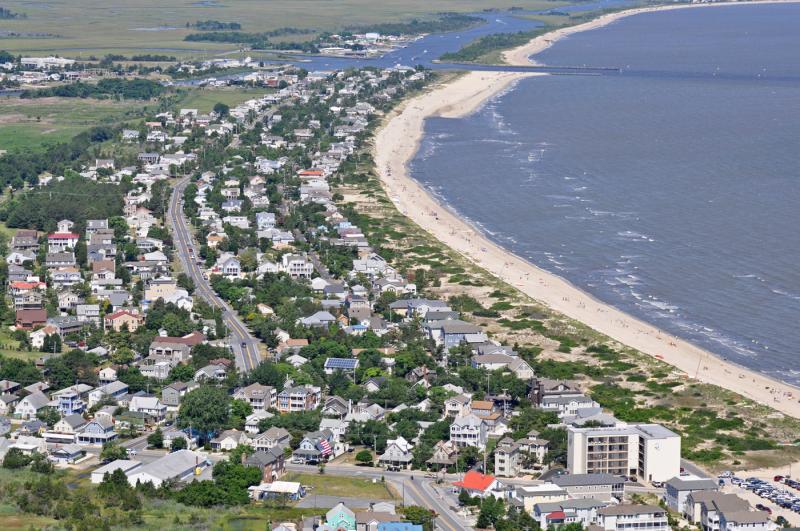Lewes residents discuss source water protection ordinance
Lewes Beach residents shared their concerns about a proposed source water protection ordinance at a Dec. 6 public hearing before mayor and city council.
Some residents say the ordinance would put a costly and unnecessary burden on property owners. Others say the ordinance achieves nothing.
In the latest proposed ordinance, parcels smaller than 1 acre would be allowed to build to the lot coverage prescribed by code – 65 percent in the case of most Lewes Beach lots. Those smaller lots would be required to use pervious materials for driveways, walkways, decks and other paved surfaces.
For lots larger than 1 acre, maximum lot coverage is limited to 20 percent. City Manager Ann Marie Townshend said the 1-acre threshold applies to both major subdivisions and site development.
The state requires that any jurisdiction with 2,000 or more residents must have a source water protection ordinance. The focus of the ordinance is protection of water quality and quantity. There are two components to a source water protection ordinance – wellhead protection and excellent recharge area. The latter is the subject of Lewes’ proposed ordinance. The city’s excellent recharge area covers an area from Cape Henlopen State Park to Kentucky Avenue, about halfway between Savannah Road and Roosevelt Inlet.
The city’s existing ordinance was passed in 2008; however, it was never enforced. If applied, it limits lot coverage on any property within the excellent recharge area to 20 percent, with the ability to increase to 50 percent lot coverage with an environmental assessment impact report. Lewes Beach properties in the excellent recharge are zoned R-3, residential beach, which allows up to 65 percent lot coverage; however, the source water protection ordinance overrides the lot coverage standard.
Townshend said city staff discussed the issue with the Department of Natural Resources and Environmental Control, stressing to them that water infiltrating the ground on Lewes Beach properties does not reach the city’s drinking-water wells.
“DNREC’s position is that state law requires the protection of water resources and the ground water, and it is not specific only to drinking water and that it was important that we have an ordinance that applies entirely,” Townshend said.
Some residents were confounded by DNREC’s statement. Rick Quill says the city and DNREC keep pointing the finger at each other and moving the goal posts.
“There is no way on God’s green earth that one drop of water on Lewes Beach can even make it [to the aquifer],” he said.
He said the city should be guided by science and suggested the city do what’s right for Lewes.
“What is DNREC going to do about it?” he asked.
Several residents criticized the requirement of porous and pervious materials for walkways, driveways and decks, and the mandate that it must be an engineered system and approved by the city’s engineer.
Residents asked why property owners would be forced to use such materials if they are not protecting the city’s drinking water supply.
The city moved its wellheads to an area adjacent to Cape Henlopen High School, outside the city limits; there were once wells on Lewes Beach, but they were capped in the mid-1900s.
“There isn’t any drinking water on the bay side of the canal,” said Dennis Reardon, a former councilman. “What are we doing? What is the purpose of this? Since we don’t have anything to protect, we shouldn’t impose the definition of pervious surface that’s in this proposed ordinance, and we really need to go back to the drawing board.”
Reardon recommended the city take a step back and have a discussion with the people impacted by the proposed ordinance.
Resident Nick Carter asked the city how many properties this new ordinance would impact, since the majority of lots on Lewes Beach are less than 1 acre. He said he’d be surprised if there are fewer than 25 vacant lots. Mayor Ted Becker said it’s difficult to determine the actual number because any property that has an existing home that is demolished would have to adhere to the ordinance if building a new home.
Carter suggested the city focus on bigger, more serious issues.
“I propose you scratch this and redirect your energy to something a little more important - the wastewater treatment facility. It lies over the recharge area,” he said. “It contaminates the water source. If we have a spill like we had in ’19 or if we have another one like we just had, it’s going to contaminate the water source. I think there’s a big elephant in this room and we need to take the cover off the elephant and address the important issue here: How to protect the citizens of Lewes.”
A copy of the ordinance can be found at www.ci.lewes.de.us/356/Source-Water-Protection-Overlay-Ordinanc.
The public may offer comments until Thursday, Dec. 30. Becker said city council is not expected to act on the ordinance prior to the city’s regular meeting Monday, Jan. 10. The city has a moratorium on enforcement of the existing ordinance in place until March 14, 2022.
Nick Roth is the news editor. He has been with the Cape Gazette since 2012, previously covering town beats in Milton and Lewes. In addition to serving on the editorial board and handling page layout, Nick is responsible for the weekly Delaware History in Photographs feature and enjoys writing stories about the Cape Region’s history. Prior to the Cape Gazette, Nick worked for the Delmarva Media Group, including the Delaware Wave, Delaware Coast Press and Salisbury Daily Times. He also contributed to The News Journal. Originally from Boyertown, Pa., Nick attended Shippensburg University in central Pennsylvania, graduating in 2007 with a bachelor’s degree in journalism. He’s won several MDDC awards during his career for both writing and photography. In his free time, he enjoys golfing, going to the beach with his family and cheering for Philadelphia sports teams.























































